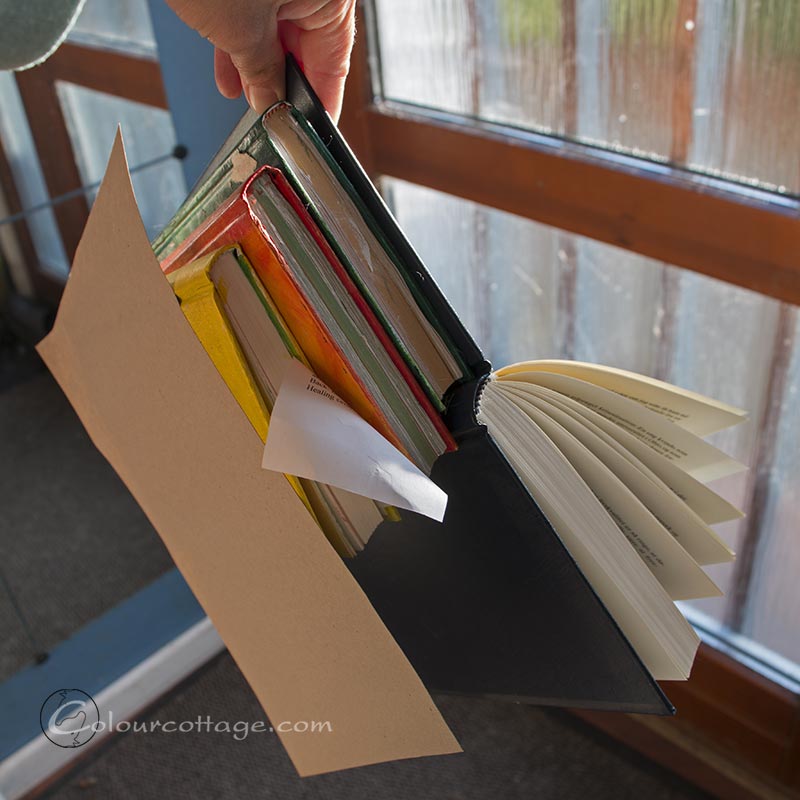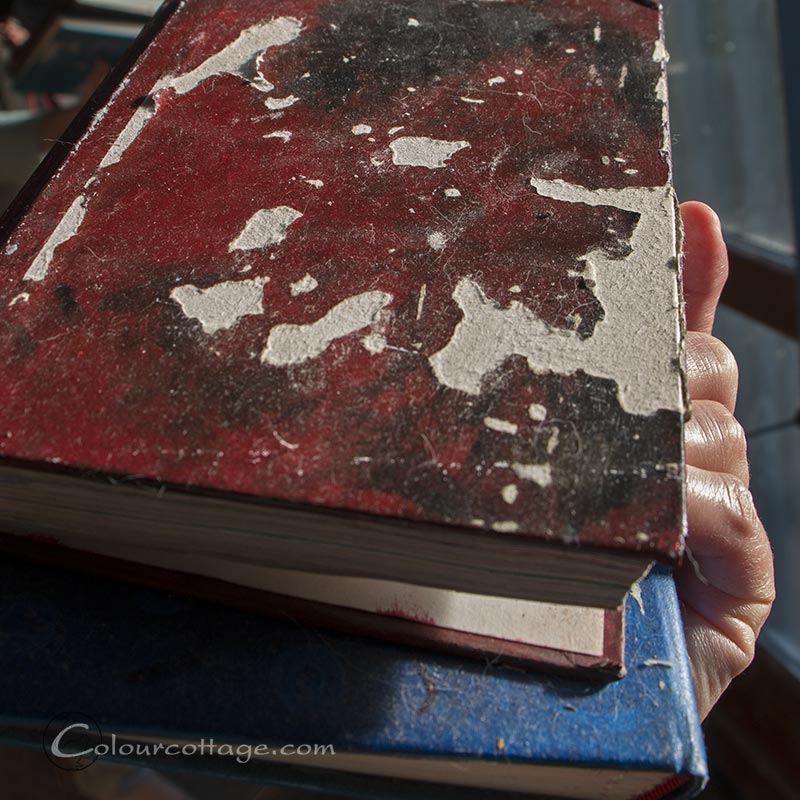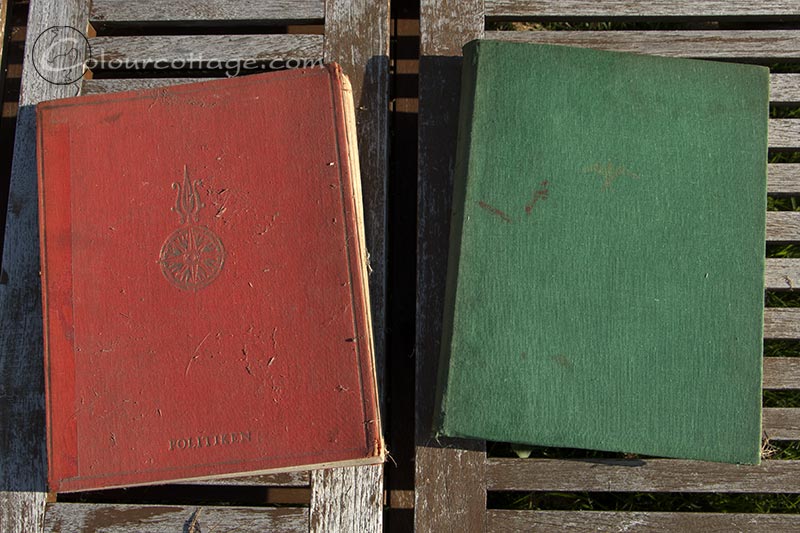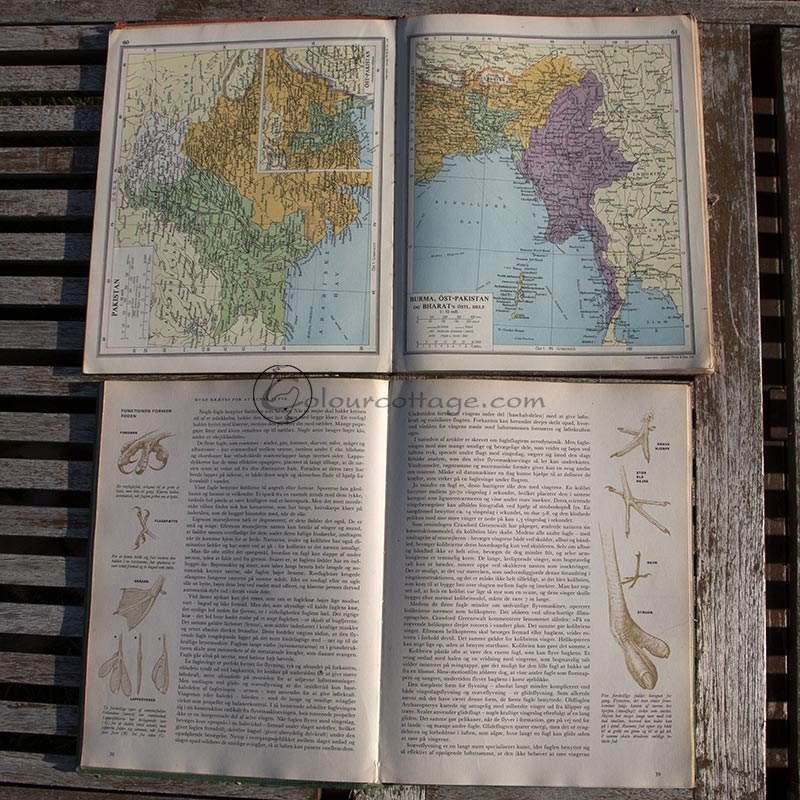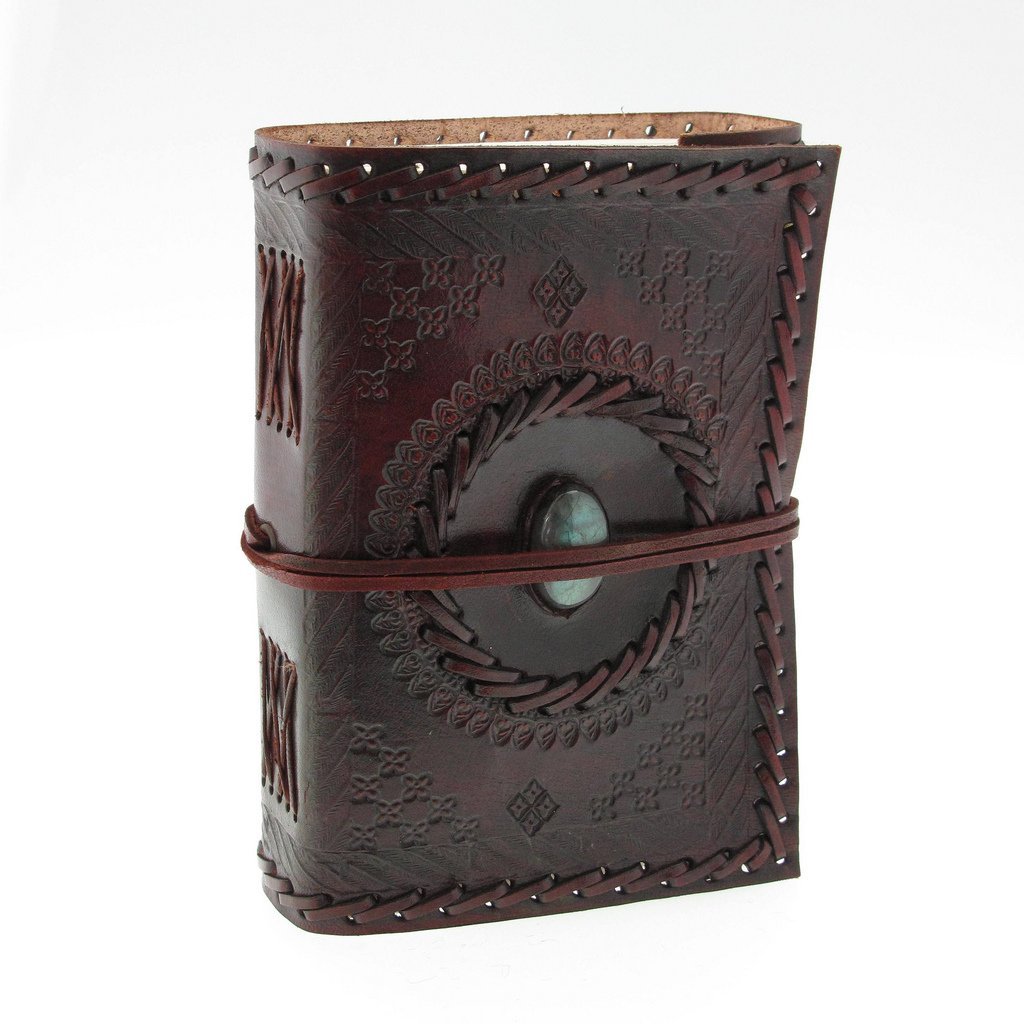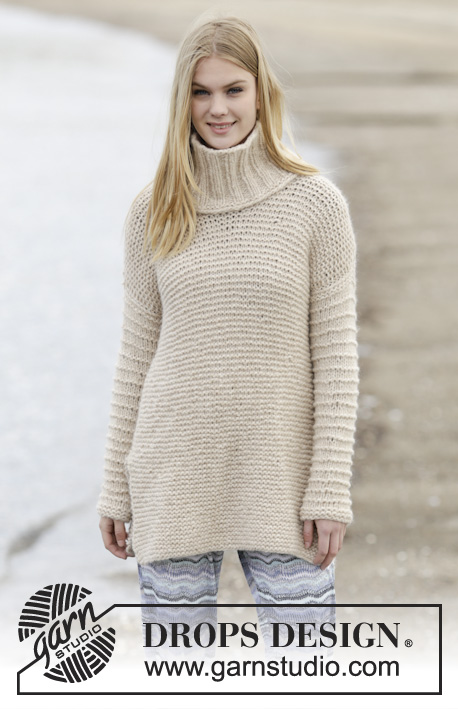It’s been a couple of years since I tried this, running into a few issues I didn’t bother dealing with at the time.
First of all I didn’t realize for how long acrylic painted surfaces will stick together, so despite curing for weeks, after being stacked my lovely covers were as glued together and then ripped when I separated them. Same thing happening with many of the pages. I’ve since read that you can use decoupage varnish (or was it dec. medium? Is that the same thing?) because that doesn’t stick. I’m leaning more towards using other paints than acrylic on the inside, such as gouache or coloured pencils + collage.
In my case fabric would be an obvious choice for covers, so I may look into that as well.
I was also quite annoyed that they wouldn’t always stay flat open even though I’d removed many pages, making it difficult to work because I couldn’t leave them out to dry. So I clearly need to learn to pick the right books or make my own from scratch.
I’ve salvaged some pages I liked, repaired 2 covers, and thrown out the other 3 books that didn’t have proper signatures – the ones that are single pages glued to the spine are the ones most likely to not lie flat.
And I just found two really filthy books in the hayloft, which had somehow survived the purge before building my studio.
One I’m having doubts about, the spine is missing, the rest of the cover is also not in good shape so I can do anything to it without regrets, it opens completely flat. But it’s also an atlas, and I love maps. Not ancient, just 1953, but still, I hesitate to paint over them! The other doesn’t open quite as well, but perhaps better when I remove some pages, the cover is in better shape and I couldn’t care less about the inside (It’s a bird book, so there is some use for a few images I’m sure). I don’t live near any antiquarian bookshops, and frankly what you see in local fleamarkets are modern, cheap book club items with crummy bindings and no appeal to the imagination at all.
I’m not sure why I bother, I could do my beginner doodling on regular A4 pads from the supermarket, but they’re not very sexy.
Of course this is the kind of book that turns me on, and I’d probably be afraid to write in it ever:
I have a whole bunch of ideas for relief making, but I don’t see a space in my current budget for a die cutter, so I’ll have to look at other, more fiddly options such as scalpel or molding paste.
It’s quite normal that I begin to do sideline projects when it’s not possible to get enough time to keep my focus on planned projects. This was the result of clearing out shelves and finding bits and pieces, of course my brain is not content to stay with the chores and lures me to play!  I’ll be back with photos if/when I manage to pursue this further, I’ve already been interupted a gazillion times during the making of this post, so nothing is done-done.
I’ll be back with photos if/when I manage to pursue this further, I’ve already been interupted a gazillion times during the making of this post, so nothing is done-done.

